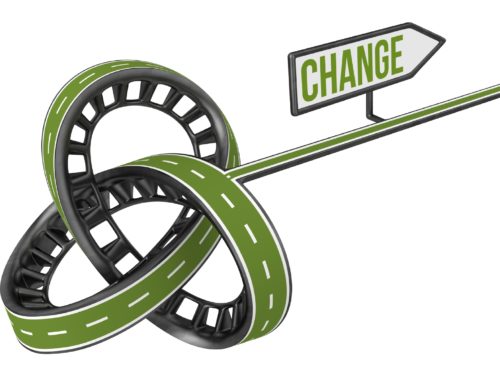Decisions are a funny thing. You can’t initiate change without them, and yet deciding doesn’t mean that anything will be different. For instance, President Lyndon B. Johnson announced a decision to end U.S. poverty in 1964. There were countless changes, and 50-plus years later, not much is different. The poverty rate was 19 percent when Johnson’s War on Poverty began, and it was 13.5 percent in the 2015 report by the U.S. Census Bureau. Over the years, poverty has fluctuated up and down in a fairly consistent range. Perhaps Ronald Reagan was correct when he said, “We fought a war on poverty, and poverty won.”
It’s the same for your business. You can decide that something needs to change. That doesn’t mean anything will actually be different, however. Your decision is not the change. It is only a choice to pursue a new course of action. If choice was the only requirement for success, the failure rates for change would be dramatically less than the 50 to 70 percent reported in the business press.
To make change work, you must actively lead and manage your efforts to turn intention into positive action. These four activities will help.
- Bring others with you. Your team’s first question will likely be, “How will this change affect me?” People change for their reasons rather than yours. Your decision to change will have substantially greater opportunity to actually work if you find ways to involve others in the areas that affect them. Remember – people support what they help create.
- Establish valid and relevant metrics. Another early question from your team will be, “How will we know our effort is successful?” Organizational history is littered with examples of change efforts that had no measurable impact on customer satisfaction, quality, productivity, sales, employee engagement, or any other contributor to the bottom line. The most successful change efforts help everyone answer the question, “From what to what?” Valid and relevant metrics provide the vehicle to define that success.
- Build competencies and skills. You can argue that developing people is implied in a decision to change. The problem is that there are too many examples where a leader decides to implement a new initiative only to have it fall short because not everyone knew how to do what needed to be done. The size of your commitment will never overcome a lack of competencies and skills.
- Create and anchor processes and systems. Does this sound familiar? Everyone is pumped about the new change in the first few days. Momentum stays high through the first month … or perhaps even several months. Six months in, the change is showing visible changes of slippage. By the end of the first year, people on your team have labeled your change as the latest in a long line of MBBS (Management by Best Seller) failures. The problem wasn’t the change or your decision to make it. You simply failed to develop and follow processes and systems that turn your intention into consistent action. Initiating change is easy. Sustaining it requires the discipline that springs from consistently followed processes and work systems.
Nothing ever changes until you tell yourself and others the truth. It doesn’t matter if you want to change a long-standing process in your company or how the nation tackles an important problem. Positive change can be hard. Your decision is crucial, but leading successful change requires more than a decision.
Randy Pennington is an award-winning author, speaker, and leading authority on helping organizations achieve positive results in a world of accelerating change. To bring Randy to your organization or event, visit www.penningtongroup.com , email info@penningtongroup.com, or call 972.980.9857.





